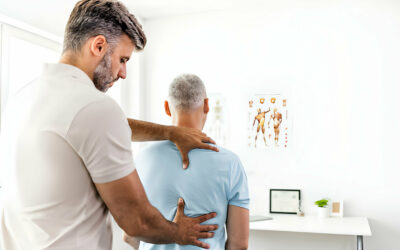How Does Scoliosis Affect the Body?
Your spine has a normal side curvature, but sometimes the curve can become greater, resulting in scoliosis. This condition is relatively common, affecting six to nine million Americans. However, it is the most prevalent among children aged 10-15, where 100,000 children are diagnosed with this condition every year.
Scoliosis requires active management, and if left untreated, it can have severe consequences on the body. Read on to learn what scoliosis does to the body and how you can prevent that from happening.
What Are the Symptoms of Scoliosis?
Scoliosis usually has mild symptoms, and most patients don’t have any health problems. The condition is generally diagnosed in children during routine check-ups. Depending on the severity of the situation, a doctor recommends a treatment plan and helps a child and parents better understand scoliosis and what they need to do to prevent further degradation.
The most common symptoms of scoliosis include:
- Back pain
- Uneven shoulders
- An asymmetrical rib cage
- A more prominent shoulder blade
- One unusually high hip
- An uneven waist
Scoliosis Effects on the Body
The unusual curvature of the spine results in the asymmetric shape of your body. That leads to one side of the body being more prominent or higher than the other. So, you’ll typically have one shoulder, shoulder blade, and hip sticking out. The ribcage is asymmetrical as well, and the waist is uneven.
In most mild cases, you can’t even see these changes. However, in more serious instances, the appearance changes are noticeable. Sometimes the curvature can be so severe that it limits the space within your ribcage, pressing on your lungs and making it harder to breathe.
What Causes Scoliosis?
The exact cause of scoliosis remains unknown. The risk factors include age, sex, and family history. The condition is most common in adolescent girls, and scoliosis can run in families, suggesting a genetic factor.
In addition, certain diseases and events can lead to a higher incidence of scoliosis, such as:
- Congenital disabilities affecting normal bone development
- Neuromuscular conditions like muscular dystrophy and cerebral palsy
- Spinal cord abnormalities
- Going through a chest wall surgery as an infant
- Infections of the spine
- Spine injuries
What Does Scoliosis Treatment Look Like?
Scoliosis requires ongoing treatment and the exact approach depends on the severity of the condition. That usually includes exercises and stretches that strengthen the muscles, ensuring that the curvature doesn’t deteriorate.
People with more severe cases may need to wear a brace that stops scoliosis from getting worse. It is made of plastic, and you can wear it under your clothing without it being noticeable. A child would typically wear a brace for 13-16 hours per day without any limitations.
If the case becomes unmanageable, the doctor may suggest having surgery to realign the spine.
Where to Get Adequate Care for Scoliosis
If you are looking for a professional to help you manage scoliosis symptoms, Dr. Jeffrey Pruski from the Joint and Spine Center is a perfect choice. With over 30 years of experience in chiropractic care, Dr. Pruski is an expert in helping people overcome their spine problems and back pain. Click here to schedule an appointment with Dr. Pruski, and get the best scoliosis treatment.

